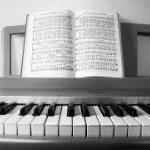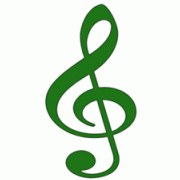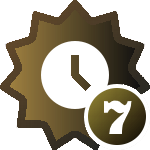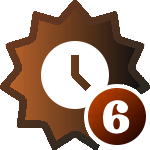
AngelCityOutlaw
Members-
Posts
737 -
Joined
-
Last visited
-
Days Won
58
AngelCityOutlaw last won the day on December 8
AngelCityOutlaw had the most liked content!
About AngelCityOutlaw

Contact Methods
-
Website URL
https://www.chrisschmidtmusic.com
Profile Information
-
Gender
Male
Recent Profile Visitors
AngelCityOutlaw's Achievements
-
2025 Christmas Music Event!
AngelCityOutlaw replied to PeterthePapercomPoser's topic in Monthly Competitions
I didn't say I'm never coming back to the forums or something (yet) but I'm not participating in this event anymore and I've now explained myself to a number of people who've quoted me. -
2025 Christmas Music Event!
AngelCityOutlaw replied to PeterthePapercomPoser's topic in Monthly Competitions
Reporting them meant nothing. Their Suno prompt is still in the event and the staff didn't even really offer an explanation for why they did a 180 in a matter of minutes. You have to have principles and actually stand by them or else your principles don't mean ѕhіt. I am against AI-generated music and I will not spend precious, authentic composing hours to participate in anything alongside charlatans. -
2025 Christmas Music Event!
AngelCityOutlaw replied to PeterthePapercomPoser's topic in Monthly Competitions
How is that possibly going too far? -
It's impossible to say where to start without knowing where you presently are.
-
I was just looking up the Cantai thing you've been talking about. I don't know that it's "AI" in the way that Suno and the others are AI. It seems like a more advanced version of Noteperformer and sample-based synthesis that allows for cloud rendering. But the main distinction is that it can actually play back the sheet music you give it. Music-generation platforms like Suno can't so as expected, OP was full of ѕhіt I do think that if AI stays around and gets to the point that it can actually realize an accurate orchestral (or other) mockup from MIDI/sheet music, it will be over for sample library developers. At least until AI collapses under its own weight, which I still think is probably inevitable.
-
Right, so we can safely write off the idea that you "composed" this piece.
-
2025 Christmas Music Event!
AngelCityOutlaw replied to PeterthePapercomPoser's topic in Monthly Competitions
Also something else I need to say about this: So I, and others, can put in hours of work writing the music, orchestration, making detailed mockups, etc. but a guy who writes a Suno prompt and has a "piece" in 5 minutes is treated as equally-valid in this event? It isn't actually even his music. Where is the "fun" in that, exactly? Why even bother? You guys say you want more people to do reviews. What your reviews are going to become if this kind of thing is permitted is a bunch of people being like "Nice prompt bro, but I would've said 'romantic soaring strings' instead of 'cinematic'". -
2025 Christmas Music Event!
AngelCityOutlaw replied to PeterthePapercomPoser's topic in Monthly Competitions
I'm sorry Mike, but you guys folded like a cheap suit in a matter of minutes. You give these AI bros an inch and they'll take 3 miles. What is to say you won't fold the same when it's not "just for fun?" Aren't all of these "just for fun" in some way? And people will bring up that "Well you accepted AI that time!" Is this a place for composers, or a place for grifters passing off AI music? -
What I said is that there is no way AI generated "just a recording" of his piece. When I googled, even when I asked ChatGPT, there is no AI presently that can generate an accurate — "1:1" as OP says — mockup recording. If there was, Spitfire would be closing their doors right now. He also says he prompted it. Okay well, do you actually believe he sat there and typed out an entire note-for-note description and it rendered it? If you believe that, then prompt the AI (he doesn't say which he used) and if you don't get the exact same result, then you know he's lying. I can't get Suno to generate a solo drone, never mind a precise multi-voice harmony for choir that is 1:1 what I'd write. What has most likely happened here, is he is passing off an AI generated track as "his" work because it fit the "vision" he had or something and is providing you with a transcription. Until someone provides evidence and can replicate this piece with the same prompts or software, there is no reason to believe otherwise.
-
2025 Christmas Music Event!
AngelCityOutlaw replied to PeterthePapercomPoser's topic in Monthly Competitions
I'm withdrawing my participation. Competition or not, if you're putting on essentially a display of music created by members and also giving out site badges for them, then I feel that music should actually be created and produced by the members of the forum. I want my music alongside other human-created works. -
I What AI? I am unaware of any AI currently on the market that is capable of rendering sheet music as high-quality, "1:1" audio. If there was already such a thing, the sample library market would have imploded. But you said you "Prompted" it. Well, I'm similarly unaware of any of the major music AIs being able to deliver anything 1:1 based on a description. If such a thing existed, Suno and whatever the other big one is would already have been trounced. I tried to get these things to generate just a drone all by itself and it couldn't even do that, so I don't believe that, based on a prompt, you got an AI to deliver these complex harmonies and such "1:1" Absolutely no way.
-
So the big news today is that Netflix will acquire Warner Bros. and will now own all sorts of IP including Lord of The Rings, Harry Potter, Mortal Kombat, Batman and so much more. Immediately, they wasted no time at all announcing "shortened theatrical release windows". In essence, they are aiming to kill movie theaters entirely. https://www.cbc.ca/news/entertainment/us-netflix-warner-bros-acquisition-9.7004170 This is going to put a tremendous amount of people out of work and lower wages across the industry just so that Netflix can increase subscriptions (and no doubt jack up the price further). Why is this bad for you, as a composer? Well, the TV and Film industries remain the most lucrative path for composers between not only composer fees, but longtail royalty payments. Even mid-tier indie films have the potential to pull in millions of dollars in revenue against tiny budgets at theaters. For example, at a film festival I recently attended, some of the films that had been short films in prior years went on to become multi-million dollar projects. Simply put: Streaming means smaller budgets and as an individual film is no longer a product unto itself, especially not if you can only stream it on one service and not "rent" it like on Amazon Prime, the "profitability" of that film is essentially zero dollars now. Because everything is consolidated under one subscriber base. Even with hundreds of millions of subscribers, there is no way that this fixed income can be redistributed to fund anything resembling quality content in any sufficient amount. That means lower pay, lower budgets, and even less room for risks and originality than what Hollywood is already starved of. Regardless of what you think of him, now would be the time for the orange man to do something about these growing monopolies, but what he'll probably just do is more tariffs. Personally, I think this move is going to be a big, possibly final nail in the coffin of the American movie industry. The earning potential for everyone down to production assistants is going to plummet in the American movie industry, and I think you'll see all these people turning towards European and Asian markets. There will be even more creative brain-drain on North America than there already is. Curious to know what you think about this?
- 1 reply
-
- 1
-

-
2025 Christmas Music Event!
AngelCityOutlaw replied to PeterthePapercomPoser's topic in Monthly Competitions
I'll give it a shot -
So I've been revisiting the "Metroid" series of Nintendo games from my childhood. Played through Prime and now Dread, which is the newest one until Prime 4 comes out in a couple weeks....it's not one of the better entries. But what stood out to me is the music. This is from the opening of the game. That is a very...not-convincing orchestral mockup, I must say. Definitely not for 2021. When I did my first game score 15 years ago now (omg), this sort of mockup would've gotten you laughed out of the building in the West. Even indies wouldn't have hired you unless it was a pixel-art throwback game and even then you're pushing it. I remember when I did my first soundtrack which was for a couple of Ubisoft devs back then, they were obsessed with "real", and even EWQLSO wasn't enough for them. But I remember reading a few years ago on Redbanned there was a survey, and Japanese composers still most often use Symphonic Orchestra Gold. It's very odd to me and something I"ve noticed specifically in Japanese video games. Not so much in film and TV — I see people from Japan regularly dropping killer mockups of John Williams and such on YouTube, but professional Japanese game devs really don't seem to care. Demon's Souls sounds like it used straight up ROMpler and "General MIDI" patches as well. Just abysmal. I wonder why in Japan they seem so unbothered by it? You'd think especially companies like Nintendo, who are so big on quality-control everywhere else and have these iconic melodies from like Mario and Zelda would demand only the best production quality?
-
Is Video Game Music Declining In Popularity?
AngelCityOutlaw replied to AngelCityOutlaw's topic in Composers' Headquarters
There was something I was going to say about this part specifically and I remember like 3 days ago saying "When I get home I have to remember to say it" but now I'll be damned if I can remember what it was.


.thumb.png.1e2763f479362bbb522da50d31ef2e50.png)










